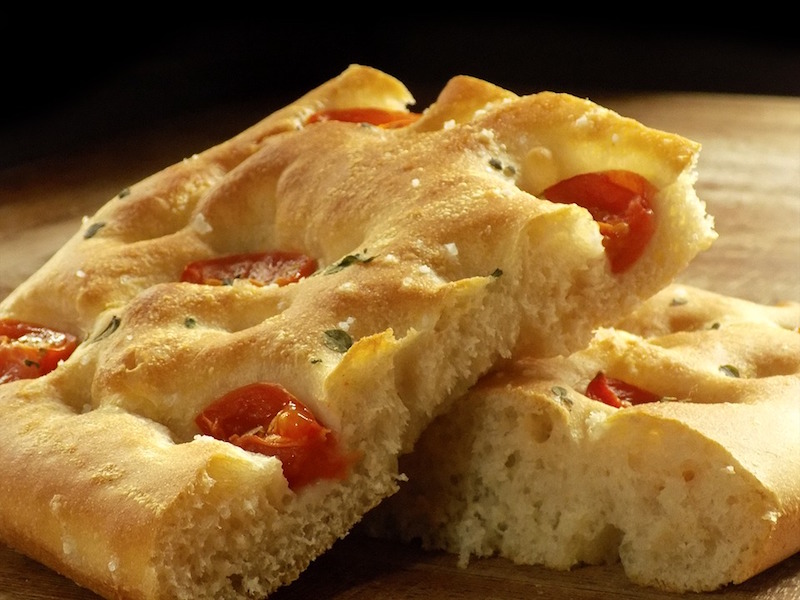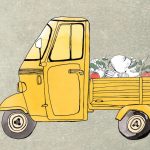What do Italians actually eat? And no, by that question we don't mean the typical Italian dishes such as pasta and pizza for a change. Perhaps it is better to ask what Italians eat when. What do they call their daily meals? What do they eat for breakfast? When is it time for the appetizer? And do they sometimes take a snack or is that 'not done'? An overview of an average Italian day in five eating moments.
Table of contents
1. Colazione: the Italian breakfast to get you started
If you meet the italian breakfast If you think about it, you probably immediately picture Italians rushing into a bar for something to eat and drink. And that is in line with reality.

The bar
Many Italians are quick to visit the bar nearby before going to work. How can you start your day without caffè, cappuccino or one of the other coffee varieties? They often eat a brioche with it, the Italian equivalent of the French croissant, but filled with pastry cream, chocolate, Nutella or jam.

Or do they opt for one of those other sweet rolls that the display case at the counter is full of early in the morning. A fairly traditional and simple start to the day actually. A true paradise for lovers of sweets.
all house
Although it is quite common in Italy to have breakfast in the bar, there are also hordes of Italians who just do it at home. In general, the colazione at home is no more elaborate than the one in the bar. You drink something warm like coffee, tea, caffè latte (comparable to a latte) or cappuccino and you eat something sweet.

That sweet thing can be a few cookies from those mega packages that fill an aisle in every supermarket. Or a piece of cake. A prepackaged brioche. Or toast with some jam. And then quickly out the door, to school and work.
Very slowly something is changing in the traditional home breakfast and there are even Italians who not only drink some fruit juice, but also eat a bowl of yogurt with muesli to start the day.
What time do Italians have breakfast? According to Italian experts, the ideal time for breakfast is between 7 and 8 a.m. and within 2 hours of waking up. The body then consumes calories faster thanks to the production of cortisol and insulin.
2. Spuntino or merenda: the Italian snack
What do you do when you feel a tickle in your stomach after that light breakfast in the middle of the morning and it is far from lunchtime? Or when, despite lunch, you would like to eat something around five in the afternoon? Or, even if that's not really a good idea, right before you go to sleep? Then you take a , snack, a snack such as fruit, yogurt, bread with some toppings or a piece of focaccia. Or anything else you're into. At least not something warm.

De snack can you describe as a ', snack for children'. Originally stood snack for the snack that children have at the end of the afternoon around four or five o'clock to bridge the time until dinner. But the word is now also used for the snack they eat in the morning at school.
According to the Italians, you should have a snack about 3 hours after dodging. However, you must be careful not to fall into the temptation of the snack bar from the vending machine. You're most at risk around 11 a.m., because that's when your appetite starts to kick in (especially if you haven't had a lot of breakfast).
3. Pranzo: the Italian lunch
When you think of an 'Italian lunch' you immediately think of a long table full of people feasting on the countless bowls of delicious food. However, that image is more appropriate for Sundays and holidays such as Easter Sunday en First Christmas Day. Those are the days when family gets together for lunch and spends time in the kitchen preparing all kinds of regional dishes.
Somewhere between 12 and 14 p.m., the dinner party starts. After the antipasti, the starters, comes the first course which is often pasta. Then follows the according to in which meat or fish has the leading role with vegetables as a side dish. The Sunday lunch will be concluded with fruit, dessert or cake and of course a coffee. With possibly a digestif to lower things down a bit.

How do Italians eat pasta?
How should you eat spaghetti and other long pasta? In Italy they only do this with a fork. Pasta is not cut and a spoon for convenience is also 'not done'. In Italy you only use a spoon for soup.
How are you supposed to eat the pasta with the fork? You keep it horizontal, tilt it slightly and you roll a few spaghetti strands on it, against the side of the plate. You do that clockwise. Don't take too much pasta and don't let sloppy strings hang down.
How do Italians eat pizza?
Pizza falls under the 'casual eating' category. How you should eat pizza depends on the occasion. In a real 'restaurant' (in Italy it is more chic than in the Netherlands or Belgium) you have to eat pizza according to the etiquette with a knife and fork.
But in less formal eateries like trattorias and pizzerias, you can eat pizza by hand. Italians are quite fond of good manners, so take a look at how the people around you are doing.
Less time for lunch
Changes in lifestyle and working hours mean that there is less and less time for such a traditional Italian lunch on weekdays. There are still plenty of Italians who have the opportunity to eat at home or in a restaurant during the lunch break.
Instead of an extensive lunch with all courses, they often opt for just a first or a according to. And although it really isn't possible in the eyes of the older generation of Italians, there are more and more working Italians who eat a sandwich in a bar between companies and then quickly move on.
The regular weekday lunch is also between 12 and 14 p.m., but under no circumstances after 15 p.m. According to the Italians, a late lunch makes you too fat. The ideal time to have lunch in Italy is between 12 noon and 13 pm. The metabolism is then maximum and you burn energy. You can then tolerate carbohydrates such as pasta and bread (choose whole wheat!).
4. Aperitivo: after work done…
Sometimes before lunchtime, but generally at the end of a day's work, it's time for an aperitif. The appetizer is the time of day to meet and catch up with friends while sipping your drink and eating some olives, peanuts or nuts.

Buffet
You see more and more that bars instead of a appetizer, an apericena to serve. An apericena is somewhere between a more extensive aperitif and a light dinner buffet. For a fixed price you not only get your aperitif, but you can also eat all kinds of small, finger food-like snacks. Especially ideal if you want to eat something light in the evening after a hot summer day.
5. Cena: end the day together with dinner
Between 19.00 p.m. and 21.30:XNUMX p.m., depending on where you live and what you do, all family members sit around the table. While eating with an occasional glance at the news, the most important events of the day are discussed. Dinner usually consists of a lighter meal than lunch, with things like minestrone, salads, cheese, vegetables and fruit.
The ideal time for dinner in Italy? From 19.00pm to 20.00pm. By eating relatively early by Italian standards, you have more time to have a bowel movement, to enjoy your free time, to take a walk or play with the children. In restaurants, just like in the Netherlands and Belgium, people generally eat a little later. If you turn up at 19.00pm, you will most likely be the first!
Extensive dinners
There are, of course, always exceptions: the dinners on Christmas and New Year's Eve are full evening and very extensive with all kinds of traditional dishes. With indispensable ingredients: a dinner at New Year's Eve without lentils and grapes is almost asking for trouble for the new year!











Comments